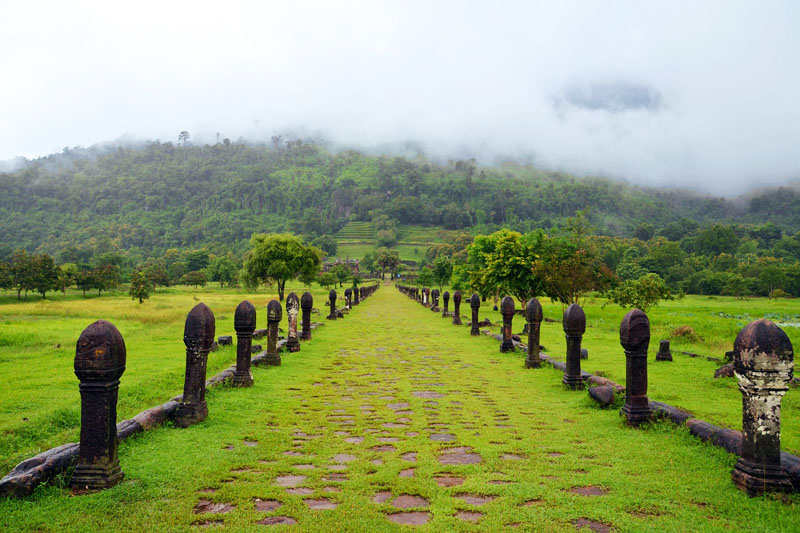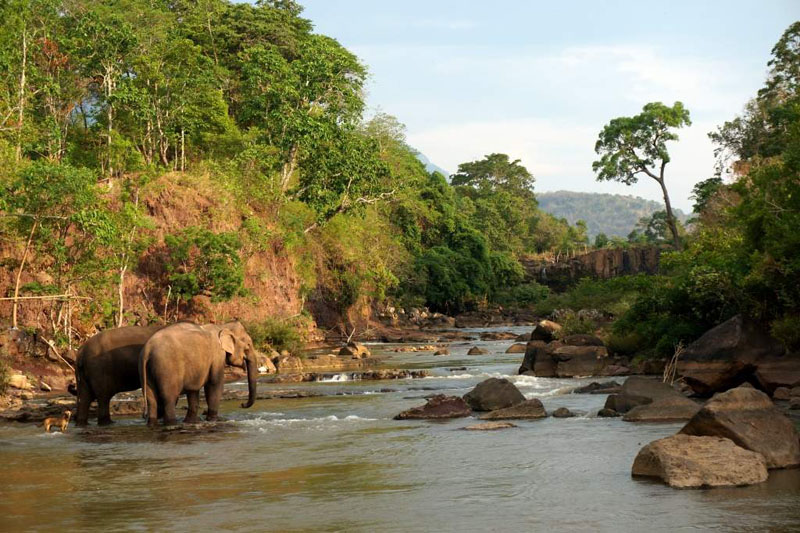Vat Phou
Vat Phou and Associated Ancient Settlements within the Champasak Cultural Landscape is a ruined Khmer Hindu temple complex interacting with its natural surroundings. The whole was created within a geometric framework linking man-made works with natural phenomena, notably the summit of Phou Kao and the river Mekong.
The Champasak cultural landscape, including the Vat Phou Temple complex, is a remarkably well-preserved planned landscape more than 1,000 years old. It was shaped to express the Hindu vision of the relationship between nature and humanity, using an axis from the mountain top to river bank to lay out a geometric pattern of temples, shrines and waterworks extending over some 10 km. Two planned cities on the banks of the Mekong River are also part of the site, as well as Phou Kao mountain. The whole represents a development ranging from the 5th to 15th centuries, mainly associated with the Khmer Empire.
A temple was on the site as early as the 5th century, but the surviving structures date from the 11th to 13th centuries. The temple has a unique structure, in which the elements lead to a shrine where a linga was bathed in water from a mountain spring. The site later became a center of Theravada Buddhist worship, which it remains today.






.jpg)